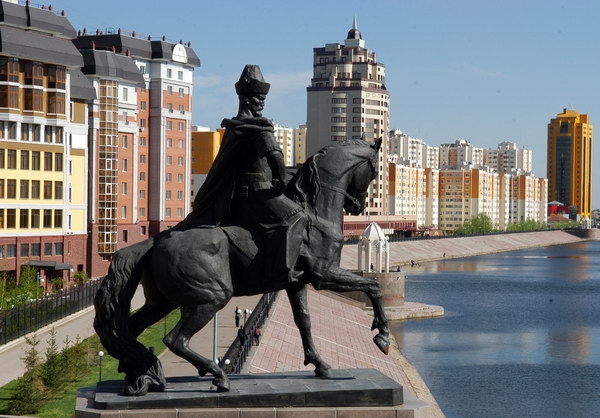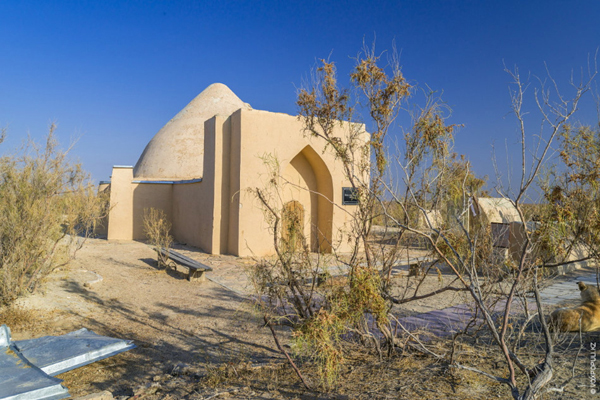ASTANA – The Holy Quran belonging to Kenesary Kasymuly, leader of protests against Tsarist expansion and the last khan (ruler) of Kazakhs, was brought back to Kazakhstan after two centuries abroad, announced President Kassym-Jomart Tokayev during the second National Kurultai meeting on June 17.

Walking along the Esil river bank in Astana, one cannot overlook the bronze figure of Kenesary Khan made by sculptor Nurlan Dalbai and the architect Shota Valikhanov. Photo credit: visitkazakhstan.kz.
President Tokayev said the return of this national treasure “is a significant event in the spiritual life of our country.”
“Any civilized country treats its historical heritage with special trepidation, which is protected in every possible way and exhibited in museums and other special institutions. We must also honor and cherish the legacy of our ancestors,” said Tokayev.
Maral Ishan (title given to the leaders of the Sufi Muslim community) was a religious figure, healer and companion of Kenesary Khan, widely known and respected among the Kazakh people.
“The Quran contains prints of the seals of Maral Ishan and Kenesary Khan. The relic has been thoroughly and comprehensively assessed by domestic and foreign scientists. The results confirm that the Quran belongs to Maral Ishan and that it was handed to Kenesary Khan,” said Tokayev.

Maral Ishan’s burial palace in the Kyzylorda Region in south Kazakhstan. Photo credit: voxpopuli.kz
The Quran will be added to the collection at the Khoja Ahmed Yasawi mausoleum in Turkistan, Kazakhstan’s spiritual capital.
“This relic is our national treasure. It is important that such a valuable spiritual artifact be in a place that is sacred to our people,” said the President.
The Quran, which is at the core of Kazakhstan’s ancient heritage, belonged to Kasymuly who kept on fighting for a homeland liberation throughout his life.
Born in 1802 in the Akmola Region, Kasymuly came from a long line of Chingizid rulers, a descendant of Genghis Khan’s son Jochi and Abylai Khan’s grandchild.
For a decade, he rode horseback, leading the movement to liberate Kazakh lands from Russian colonial expansion and reclaim the Khan’s attributes, as well as norms, morals, cultural values, social relations, economics, and politics of nomadic society.
The resettlement policy and agrarian reforms combined with the tsarist reform to secure the Kazakh steppe’s position as an integral part of the empire began to increase discontent among the Kazakh population.
From 1837 to 1847, Kasymuly united his loyal advisers and batyrs (Kazakh warriors) to gather an army that reached 20,000 people by 1841 in an attempt to gain full-fledged sovereignty of Kazakh lands.
In 1841, the congress of various Kazakh clans’ representatives decided to revive the Kazakh Khanate and proclaimed Kenesary a khan in accordance with the traditional custom by placing him on white felt.
By the time Kenesary was declared khan of Kazakhs, he had already fought dozens of battles: some against the Tsarist rule, others against the Kokand khanate, and then several more against the Khiva khanate in the far south.
By most accounts, he was a man of passion aimed at the supreme idea of creating his own state. It was this idea that had driven him through life and was a source of inspiration for people around him.
In 1847, he was captured during one of the battles and executed.

